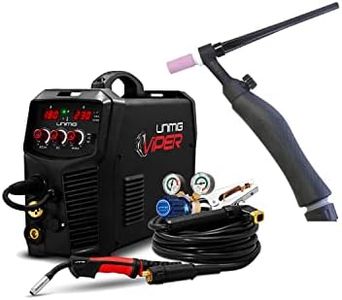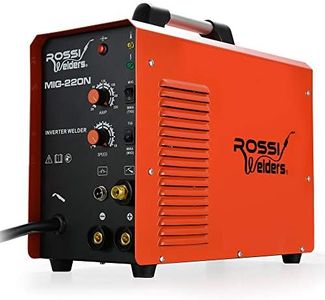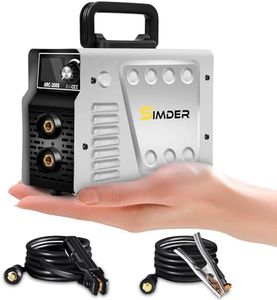We Use CookiesWe use cookies to enhance the security, performance,
functionality and for analytical and promotional activities. By continuing to browse this site you
are agreeing to our privacy policy
4 Best Ac Tig Welder
From leading brands and best sellers available on the web.Buying Guide for the Best Ac Tig Welder
Choosing an AC TIG welder can feel overwhelming, but with the right understanding of the important features, you'll be able to select a machine that matches your specific welding needs. Focus on how and where you'll use the welder—think about the types and thickness of metals you'll work on, your experience level, and if you're prioritizing portability or power. Understanding key specifications will help you make a smart, long-lasting choice.Amperage RangeAmperage range shows how much power your welder can deliver. This is important because different metal thicknesses require different amperages; thin aluminum needs lower amps, while thick sections require more power. Basic machines start around 10-20A on the low end and go up to 200-250A at maximum. If you'll mostly work on thin metals or do fine work, a low minimum amperage is vital for control. For all-around or heavier tasks, seek a machine with a higher top-end amperage.
Duty CycleDuty cycle tells you how long the welder can operate within a 10-minute period before it needs to cool down. A 40% duty cycle at 200A, for example, means you can weld for 4 minutes and must let the machine rest for 6 minutes. Higher duty cycles are important for long welds or continuous work, while occasional hobby use can manage with lower duty cycles. Consider how long your typical projects will require you to weld and match the duty cycle accordingly.
AC Frequency ControlAC frequency control allows you to adjust the number of times the current switches direction per second while welding aluminum. Higher frequencies create a tighter, more focused arc which is great for precise welds or thin materials, while lower frequencies give a wider arc suited for thicker material or broader seams. If you plan on doing detail work or want flexibility, having frequency control is a big advantage.
AC Balance ControlAC balance determines the proportion of time the welder spends cleaning vs. penetrating the metal during AC welding. More balance towards cleaning removes oxidation on aluminum, while more towards penetration fuses the metals deeper. Adjustable balance lets you fine-tune your results for clean, strong welds. If you work mainly with dirty or oxidized aluminum, a wider range of balance control can make your welding easier and cleaner.
Pulse FunctionPulse function lets the welder alternate between high and low current rapidly while you weld. This helps control heat in the weld area, reduces warping, and allows for smoother, cleaner welds, especially on thin metals. If you plan to do detailed or delicate work, or want top-quality results with aluminum or stainless steel, having pulse capability is very beneficial.
Foot Pedal CompatibilityA foot pedal allows you to control the welding current in real time, giving you better control over your arc and heat while welding. This is especially useful for TIG work where precise amperage control makes a difference in quality. If your work is detail-oriented or you want maximum flexibility, ensure the welder supports a foot pedal.
Portability and WeightPortability and weight matter if you will need to move your welder often between job sites or around your workshop. Lighter, compact units are easier to handle, but sometimes sacrifice power or features. Heavier models might be sturdier and more powerful, but can be a hassle to move. Consider how often you'll move your welder and pick a size that suits your workspace and lifting abilities.





